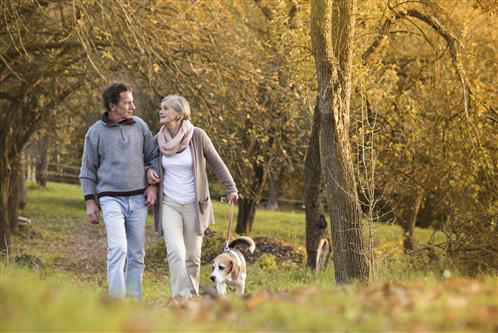Training an Obedient Dog
Starting a training program with your dog can help him improve his manners, ability to follow directions, and overall leash control. Even well behaved dogs can benefit from basic discipline. Not only will training help improve your dog’s demeanor, it can also keep him safe from harm’s way in an emergency.
Getting Started
Training is a continuous process that only improves with time. It’s best to start a regimen with your dog when he’s young – ideally within his first year. Teach in short bursts to start, no longer than half an hour each. Over time, you can increase your sessions as your pup’s attention span develops.
Popular Commands
Here are some common commands to try:
- Sit: Mastering this request is the best way to keep an excited dog from jumping on new people. To begin training, start with a treat in your hand and lower your body so you’re nearly eye-to-eye with your pet. Hold the treat above his head, waiting for him to tilt upward toward the treat, lowering his rear to the ground. Once his back legs reach a sitting position, say, “sit!” in a loud and positive voice, and release the treat into his mouth.
- Stay: One of the hardest commands for puppies to learn, the “stay” concept is vital to the safety of any dog. Asking a dog to stay put can protect him from darting into the road or attempting to use a dog door to chase another animal. When you’re practicing this command, you should always leash your dog and have him sit beside you. Flatten your palm and turn it toward his face while saying, “stay.” Then step forward, away from your pet, for just a few moments. If he tries to move, use a gentle but firm “no,” or “oops,” and put him back into starting position. When he’s able to keep still, be sure to reward him with a treat, and release his stay using the word “okay.” This brings the command full-circle. Practice this process frequently and in different locations, for best results.
- Come: Use the come command to keep your dog out of trouble, such as calling him away from the neighbor’s garden or averting his attention from a kitchen spill. Start in an open space, like a large room or secured yard. Clip a lead onto your dog’s collar, but give enough slack so it trails behind him. Holding the end of the leash, begin to walk backward, allowing your pup to step toward you. Use verbal reinforcement to control his direction, saying the word “come,” or “here” throughout the entire process.
- Leash Training: The “heel” command will prepare your dog to stay by your side during walks, putting control in your hands. Start once more with a lead clipped to his collar, held slack so he can feel any corrective tugging. The leash should be held diagonally in both hands, with your dog positioned at left. Begin to walk forward, keeping your dog’s attention by tapping your hand to your hip. If he lunges ahead, quickly turn left in front of him, and walk in the opposite direction with the lead held taut. This will teach him to heel to you, instead of forging ahead.
Some dogs are easier to train than others: it often depends on breed, age, and overall demeanor. With a little practice, however, it’s only a matter of time before you’ll see results. Once your dog has mastered basic training commands, you may want to install a pet door as a reward for good behavior. Dog doors give your furry friend access to the outdoors whenever he pleases, allowing him to exercise his training in a whole new way. At Australia Pet Doors, you can find a wide selection of quality pet doors for any breed, large or small. For more information, call us at 0414 922 751.

